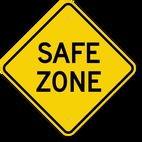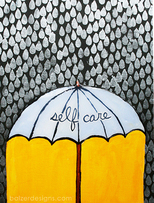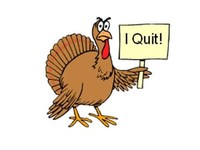|
If you've been taking a closer look at your use of substances, and have decided to make some changes, you may be wondering where to start. You may not be interested in quitting, but are curious about other positive choices you could make. One of the most wonderfully liberating aspects of a harm reduction* approach is the ability to choose from an incredibly varied menu of potential change options. Here's what could be on the menu for you...  You can reduce the AMOUNT you use each time. For example:
Sometimes this is a better option for longer-acting drugs (such as heroin or alcohol), but your experience may vary. In order to go this route, you'll need to measure how much you are actually using in order to track your progress. (Additionally, please make sure you reduce slowly; if you are physically dependent on alcohol, benzodiazepines, or barbiturates, medical detox might be the safest option).  You can alter the FREQUENCY of your use, which you might do by:
This might be a good option if you find it difficult to stop using once you've started, and for substances that are shorter-acting or harder to reduce in amount (crack cocaine or speed, for example).  You can change the number or types of substances you MIX together. Much of the harm from our use comes from the way substances combine, and you can reduce negative outcomes by using just one at a time. This might initially involve paying closer attention to the reasons why you want to mix them in the first place. (You can use a decisional balance to look closer at your potential motivations and barriers.)  You can change HOW you take your substance, such as:
Routes of administration range from safer (ingesting) to less safe (smoking) to most risky (shooting), which also affects how quickly or intensely you feel the effects. You may also find that part of the complex relationship you have with a substance is an attachment to the particular ritual of using, which may require further exploration.  You can change the SITUATION that you use in. For example
This tactic is all about paying careful attention to setting, and choosing safer options.  You can put more effort into PLANNING your use, such as:
 You can try SUBSTITUTING a less harmful drug for a more harmful one:
 You can focus on OVERDOSE PREVENTION:
This may be one of the most important harm reduction techniques of all--since survival is essential for making any future positive change!  If you decide that you are going to keep using just as you are now, you can still engage in SELF-CARE while using
 Finally, if you've decided that your goal is ABSTINENCE (which qualifies as a harm reduction goal!) there is a variety of ways to get there.
There are many more safety strategies tailored to specific substances (such as only using nitrous or ketamine from a stationary position, or supplements that might be helpful following Ecstasy use). The variations are endless, and this means that you can really design a strategy that works for you! From here, you could pick out some potential options that feel feasible, and begin preparation for that particular change. This can be a complex undertaking, and you might find it helpful to have coaching or support. If you'd like more assistance, I encourage you to contact me for a consultation, and we can discuss the kinds of strategies that might work for your life. If you are just now joining me, and are curious about the harm reduction model, I invite you to check out the other posts in this series, and feel free to ask questions if you're curious. Next time, I plan to discuss some more specific tips around risk reduction and benefit maximization for psychedelic substances. Have a great week! * Some of the information in this post was gleaned from the excellent book Over the Influence: The Harm Reduction Guide for Managing Drugs and Alcohol. For those seeking further education about this topic, I can not recommend this book highly enough.
2 Comments
Leave a Reply. |
Jessica Katzman, Psy.D.I'm a psychologist with a private practice in San Francisco's Castro District. I'm interested in harm reduction, LGBTQQIAAP issues, psychedelic integration, social justice conversations, size acceptance, and any intersections of the above. I welcome your comments! Categories
All
Archives
June 2020
Disclaimer: The information and resources contained on this website are for informational purposes only and are not intended to assess, diagnose, or treat any medical and/or mental health disease or condition. The use of this website does not imply nor establish any type of therapist-client relationship. Furthermore, the information obtained from this site should not be considered a substitute for a thorough medical and/or mental health evaluation by an appropriately credentialed and licensed professional. This website includes links to other websites for informational and reference purposes only. This website does not endorse, warrant or guarantee the products, services or information described or offered at these other websites. Examine the content carefully.
|


 RSS Feed
RSS Feed